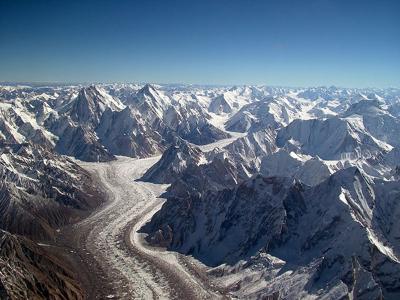- Air Homepage
- Upper Atmosphere
- Archimedes Principle of Buoyancy
Eureka Moment Floats Our Understanding of Archimedes principle of buoyancy
Find more ideas floating in the air...
Boats and ships float on water thanks to Archimedes Principle of Buoyancy. In water or another fluid, a body floats, like one of those floating candles. In a fluid, the body displaces the lesser of its mass or volume.
You might enjoy this article about Archimedes' principle of buoyancy and its impact on our world. It provides insightful explanations and examples to enhance your understanding of natural phenomena and it includes anecdotes about Archimedes' eureka moment.
Here we connect theoretical concepts to real-world applications, like weather balloons and atmospheric pressure's impact on weather patterns. By exploring a possible consequences of ice not floating on water, the article gives insight into current environmental concerns, like climate change and its impact on ecosystems and sea levels.
As they work on the object, two opposing forces balance each other out. Gravity pulls down and buoyancy pushes up. Because the forces cancel each other out, it floats motionless.
How did they figure this out? Syracuse's Archimedes. He was an ancient Greek mathematician, Physicist, Engineer, Astronomer and Philosopher. Long before some of those occupations existed.
An object floats in a fluid, whether it's a liquid or a gas, because of his principle. When you release a helium filled balloon, it goes up into the air.
And here's a bonus for meteorologists. Buoyancy makes radiosondes, helium balloons with weather tracking gear, possible.
Let me float this one by you...
Eureka
In pursuit of knowledge, observation, experimentation, and perseverance are important. So here's a bit of scientific history.
Eureka is a Greek word that means "I found it". This Greek mathematician and inventor, Archimedes, is said to have exclaimed "Eureka!" when he discovered buoyancy while taking a bath. A goldsmith cheated the king by replacing some of the gold in his crown with silver, according to Archimedes. Trying to figure out how to measure the crown's volume, he stepped into a bath and noticed the water level rise. By using this principle, he was able to determine the crown's purity by measuring how much water was displaced by it.
Since then, "Eureka" has become a popular exclamation. In science or creative pursuits, it's often used to express a sudden insight or realization. Archimedes' Eureka moment has become a symbol of scientific discovery.
Archimedes principle of buoyancy in the Atmosphere
What's another prominent example of buoyancy in the atmosphere? Clouds.
You'll find them where there's a buoyant force acting on air bigger than the earth's gravity. Clouds are pushed up by this air. Despite the fact that each cloud contains tons of liquid water, broken into tiny droplets, the upward force keeps the clouds in the sky.
Air Atmospheric Pressure
What's atmospheric pressure? Basically, atmospheric pressure is how much force the Earth's atmosphere exerts on its surface and on its objects. The weight of the air molecules in the atmosphere presses down on the Earth's surface. At sea level, atmospheric pressure is about 101.3 kilopascals (kPa), or 14.7 pounds per square inch (psi).
Mass of air above us exerts pressure on us. A barometer barometer measures atmospheric pressure and also uses units like millibars, inches of mercury, and atmospheres.
The higher you go, there are fewer air molecules above you, so atmospheric pressure decreases with altitude. Climbers on high mountains need to acclimatize to the lower atmospheric pressure, which can cause dizziness and shortness of breath.
Many natural processes, like weather and climate, are influenced by atmospheric pressure. As atmospheric pressure changes, air masses move, changing temperature, precipitation, and wind patterns. Weather forecasts and weather patterns are based on atmospheric pressure measurements.
Thus, the weather balloon takes its instrument package on a journey to lower pressure, usually. As it goes up in the air, both density and pressure decrease as noted above. And as it floats away, our radiosonde measures the changing pressure along with several other variables.
When you see this helium filled balloon rising or a cumulus cloud forming, you know Archimedes principle of buoyancy is at work.
In meteorology, atmospheric buoyancy leads to atmospheric instability. Small amounts of atmospheric buoyancy cause minor convection and cumulus clouds. Cumulus towers and cumulonimbus can become storms when that instability increases.
What if Ice didn't float on water?
It would likely have a significant impact on our planet's ecosystems, climate, and freshwater resources if ice didn't float. Here are some possible outcomes:
- Ice plays a big role in regulating ocean currents by creating cold, dense water that sinks to the bottom and circulates. Floating ice would disrupt ocean currents, weather patterns, and even climate if it didn't float.
- Changes in aquatic ecosystems: Polar bears, penguins, and seals all rely on ice to survive. If ice didn't float, it would sink to the bottom, making it hard for these animals to survive. Furthermore, the loss of ice could alter the food chain, causing ecological chaos.
- As ice sheets and glaciers melt, water flows into the oceans, causing sea levels to rise. The ice would sink if it didn't float, contributing to a faster rise in sea levels, potentially threatening coastal cities.
- Ice also plays a crucial role in freshwater ecosystems, like lakes, rivers, and streams. Without floatation, ice would sink to the bottom, reducing freshwater availability and potentially harming aquatic life.
Return from Archimedes Principle of Buoyancy to the Chasing Storms page or visit the Stuff in the Air homepage.
I try to avoid overly technical jargon while providing interesting insights into meteorology and atmospheric science, like the connection between buoyancy and cloud formation. I also show the practical significance of buoyancy while catering to a variety of interests, whether you're a science enthusiast, a history buff, an environmental advocate, or just curious about nature.
Search this site for more information now.
There is something in the air, have you noticed it?
Archimedes Principle of Buoyancy explains how atmospheric pressure works. An object's buoyancy keeps it afloat in a fluid like air.
Do you have concerns about air pollution in your area??
Perhaps modelling air pollution will provide the answers to your question.
That is what I do on a full-time basis. Find out if it is necessary for your project.
Have your Say...
on the StuffintheAir facebook page
Other topics listed in these guides:
The Stuff-in-the-Air Site Map
And,
Thank you to my research and writing assistants, ChatGPT and WordTune, as well as Wombo and others for the images.
GPT-4, OpenAI's large-scale language generation model (and others provided by Google and Meta), helped generate this text. As soon as draft language is generated, the author reviews, edits, and revises it to their own liking and is responsible for the content.




New! Comments
Do you like what you see here? Please let us know in the box below.